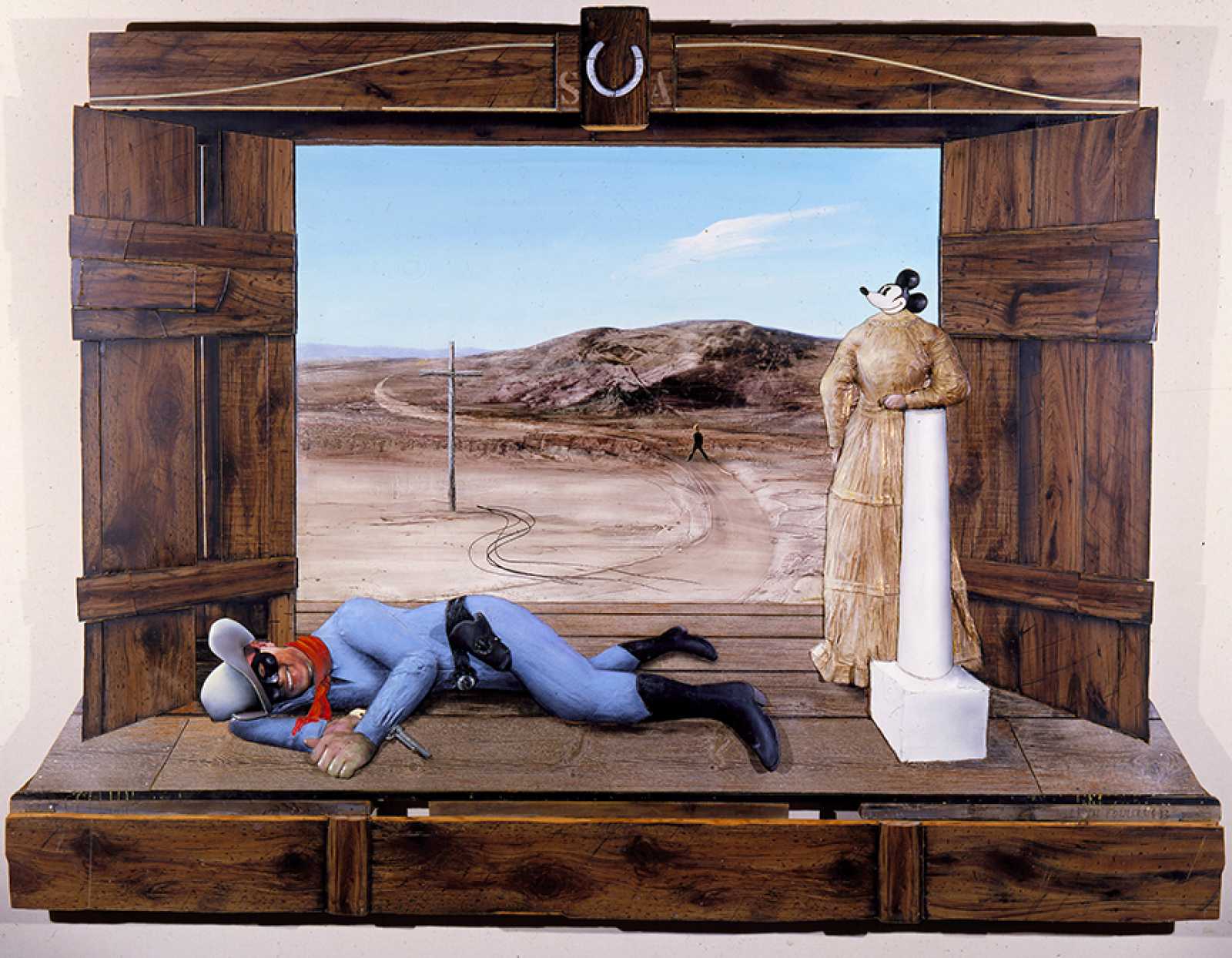Artworks of the Week
Lynn Foulkes
Llyn Foulkes has been called one of the most influential, yet under-recognized artists of his generation. Born in 1934 in Yakima, Washington, he studied both music and art at the Central Washington College of Education before being drafted in the Army in 1954. He moved to Los Angeles in 1957 where he attended the Chouinard Art Institute and began exhibiting his work at the famed Ferus Gallery.
His career over the past 50 years has included emotionally charged paintings filled with social commentary that target corporate America, often by using cartoons and comic figures, especially Disney characters. His works typically combine delicately painted surfaces with found materials and thick mounds of mixed media, including wood. Fusing narratives and landscape-based settings, his works present characters in what often appear to be stage sets. In The Last Outpost, he presents a child holding a toy gun acting out a fantasy of destroying a popular representation of the male adult as a cowboy, watched over by a woman with Mickey Mouse’s head. Anger, nostalgia for the past, apprehension for the future, and changing values are suggested in this complex work.
Llyn Foulkes (American, born 1934), The Last Outpost, 1983, mixed media assemblage: oil paint on photograph mounted on Masonite; masking tape, horseshoe, and veneer paper on fiberboard panels; acrylic paint on polyethylene and fabric; wood with hinges, pins, and nails, 81 x 108 x 5 inches. Museum Purchase with funds provided by the Contemporary Art Council, 1989, 8-1989
Rufino Tamayo
Rufino Tamayo was a Mexican modernist painter and printmaker active in Mexico, New York, and Paris. Influenced by Cubism, Surrealism, and his Zapotec heritage, he rejected the social realism of the Mexican muralists, preferring a visual language of quasi-abstract symbols and vivid colors inspired by native folk art. Criticized by his Mexican contemporaries, and after conflicts with the politically driven Diego Rivera and David Alfaro Siqueiros, Tamayo moved to New York in the 1930s where he found acclaim for his art and became one of Helen Frankenthaler’s instructors at the Dalton School. Following a decade in Paris, he returned to Mexico in 1959.
In The Volcano, long streamers of color shoot like fireworks out of a bright red core, creating a force field of energy and simulating the pyrotechnics of a volcanic eruption. Such geologic events are not uncommon in Mexico, and Tamayo had the imagery of night eruptions in mind. In this regard The Volcano is a representational painting, but Tamayo’s dynamic handling of color and explosive forms borders on abstraction and enhances his vision of vastness and powerful natural forces.
Tamayo was also a prolific printmaker and, with the help of Mexican printer and engineer Luis Remba, expanded the technical and aesthetic possibilities of printmaking by developing a new medium which he named Mixographia—a printing process that allowed for three-dimensional textures.
Rufino Tamayo (Mexican, 1899-1991), The Volcano (Le Volcan), 1958, oil on canvas, 37 ¾ x 57 inches (approx.). Collection of Gwendolyn Weiner, L1995-3.6.


